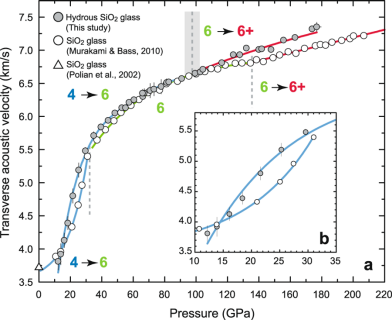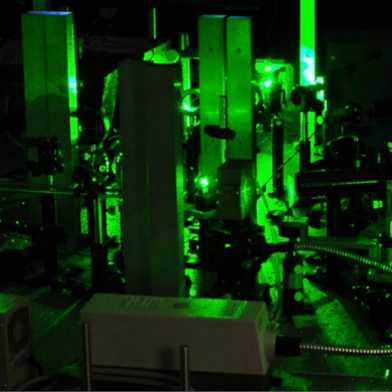News archive
Fluid-like elastic response of superionic NH3 in Uranus and Neptune
H2O and NH3 are highly abundant in mantles of ice giant planets and may exist in the superionic state. Our Brillouin study suggest a new superionic phase for NH3 with comparable velocity to that of the liquid. It suggests that superionic NH3 is nonviscous and thus cannot contribute to the internal stratification and magnetic fields in icy planets.
Experimental evidence for a silica-enriched Earth’s lower mantle
Acoustic wave velocity measurements of iron-bearing Brigmanite for pressure of the lower mantle show that it is enriched in Fe2+ and in silica.
New publication in JGR
Absolute Primary Pressure Scale to 120 GPa
Dense pyrite-type crystalline homology in Ultrahigh-pressure silica.
Researchers have measured SiO2 glass to ultra-high pressure of 200 GPa and confronted their results to calculations and found high-coordination can be sustained in silica at such pressures.
Hydrous magmas become stiffer at high pressure

New data on hydrous silica show that hydrous magmas could become stiffer at high pressure and can enhance coordination changes. This changes our views on the stiffness of magmas in the deep Earth and can help to synthesis new material.
Welcome to the mineral physics group

The mineral physics group lead by Prof. Motohiko Murakami seeks at measuring the physical properties (elasticity, density, etc.) of minerals and materials that constitute the Earth and planetary interiors.